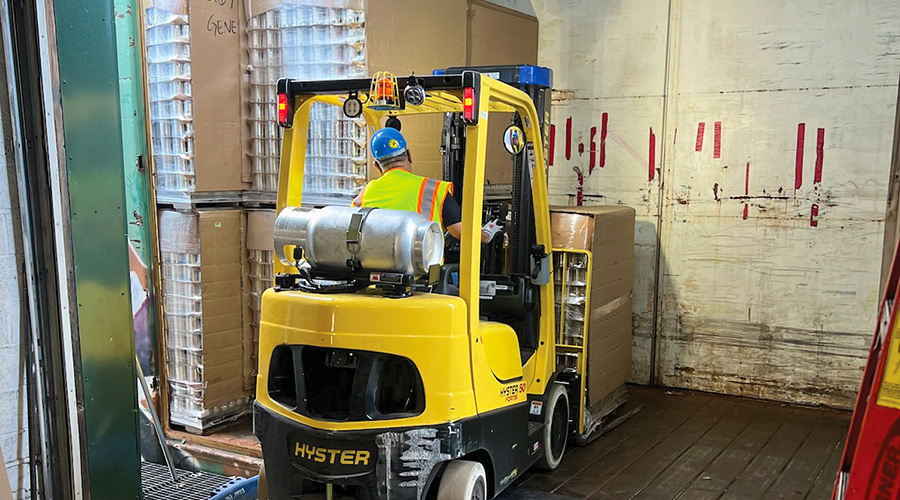A first-time grant award gets Alaska Railroad rolling on a critical bridge project
1/17/2024
By Julie Sneider, Senior Editor
Early last month, the Federal Railroad Administration awarded $8.2 billion in grants to 10 passenger-rail projects across the country. Funded through the Federal-State Partnership for Intercity Passenger Rail (Fed-State National) Program, the grants were awarded to help pay for projects that advance two high-speed rail corridors and fund improvements to existing rail corridors for expanded and improved rail service.
The FRA awarded one of those grants to Alaska Railroad Corp.’s (ARRC) project to replace its bridge over the Little Willow Creek in Willow, Alaska. Although the FRA has awarded federal funds to ARRC bridge and infrastructure projects in the past, the $8.2 million grant received last month is the first time the railroad won funding through the Fed-State National program, ARRC officials say.
The ARRC, which marked its 100th anniversary in July 2023, manages 656 miles of track, 682 freight cars and 45 passenger cars, and 51 locomotives. The nearly century-old Willow bridge is located on the railroad’s North Corridor mainline between Anchorage and Fairbanks, a line that carries a substantial number of passengers during the summer months via ARRC’s intercity passenger service and about half of the cargo that the railroad’s freight trains move between the two cities. The summer passenger service transports thousands of tourists, and during the winter months it continues to transport Alaskans between the cities.
“If that bridge failed one day, we would be shut down,” says ARRC Vice President and Chief Engineer Brian Lindamood. “Because we’re the only railroad, there is no way around it. A lot of our structures like this one are operationally critical.”
Built in 1925, the bridge is a single-span, 80-foot structure that crosses Little Willow Creek at ARRC milepost 190.5, just north of Willow, Alaska. The project calls for replacing it with a new 125-foot, single-span through-plate girder bridge. The tiny town of Willow is about 72 miles from Anchorage.
Built on shallow concrete foundations, the existing bridge was part of a federal purchase of 60 steel bridge spans installed as the railroad was built. Over time, the foundations have tipped.
“We are in one of the most seismically active areas in the world. Shallow foundations with a bunch of fill behind them don't do very well in that environment,” Lindamood says. “They're literally beginning to tip in, and at some point, they're not going to hold the bridge up anymore.”
Engineers first considered building a temporary bridge before starting construction on the new bridge, but that option would have been more expensive. Also, Willow Creek is part of a highly productive salmon and trout stream, and bridge construction must be particularly sensitive to that environment. So, Lindamood and his team looked at other options.
One technique the railroad has begun using to build bridges in sensitive areas is to construct new foundations behind the existing ones, then make the bridge longer. In a single traffic outage, the crews can slide the old span off and install the new one. The old foundations underneath the new bridge are then removed. It’s a “relatively simple process” as far as bridge construction goes, according to Lindamood.
“Instead of building two bridges, we’re building only one,” he says. “It requires less in-water work and it’s less environmentally complicated. We don’t have to have the track crews involved, so it’s a lot less of a construction footprint.”
 “A lot of our structures like this one are operationally critical.” — Brian Lindamood Alaska Railroad Corp
“A lot of our structures like this one are operationally critical.” — Brian Lindamood Alaska Railroad CorpThe new Willow bridge will be able to withstand the dynamic forces of the waterway and mitigate future scouring and erosion, according to the ARRC grant application to the FRA. The new bridge also will better handle increasing passenger-rail traffic and remove load weight restrictions so that 286,000-pound freight cars can cross the structure. That will eliminate the need to enforce speed restrictions for freight-rail transportation.
The Willow project is estimated to cost about $10.3 million, with ARRC paying the remainder with nonfederal funds after the grant dollars are applied. Lindamood hopes the project will be ready for bid later this year, with construction starting in 2025.
Little Willow Creek is one of 180 rail bridges along ARRC’s mainline and branch track. Its replacement is part of a larger, eight-to-10-year program at ARRC to upgrade, overhaul or replace dozens of bridges to improve operational safety, maintain a state-of-good repair and support heavier and longer trains. In many locations, slower train speeds now are necessary due to bridge age and deterioration.
“When I took this job in 2019, we had one bridge over 100 years old. This year, we have seven; two years from now, we'll have 40,” Lindamood says. “Some of those old bridges are doing pretty well, but after 100 years they need a makeover.”
The railroad has received federal funding for bridge and infrastructure work through programs such as the Rebuilding American Infrastructure with Sustainability and Equity (RAISE) and the Consolidated Rail Infrastructure and Safety Improvements (CRISI) programs. But the federal Infrastructure Investment and Jobs Act of 2021 opened up more opportunities for competitive grant funding for specific projects, like the $8.2 million award for the Willow bridge.
With additional grant applications pending or in the works, Lindamood hopes more federal dollars will be on their way to Alaska Railroad.
“The bridge program is getting up to full steam in the next year or two and we’re going to be rolling pretty hard here for at least the next six to eight years,” he says.


